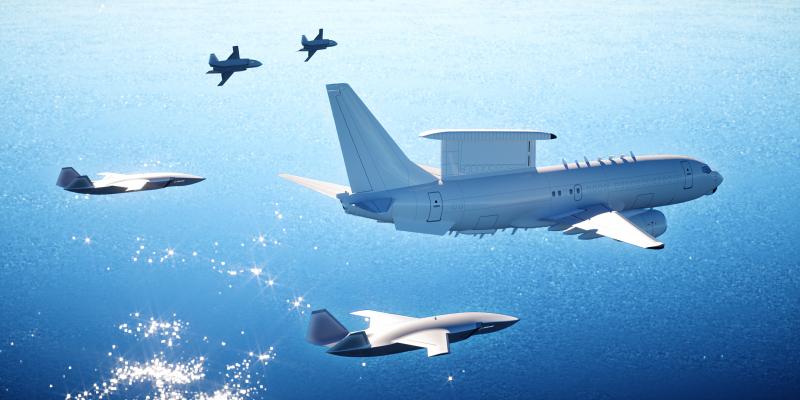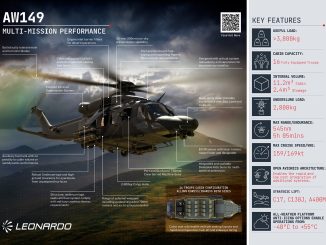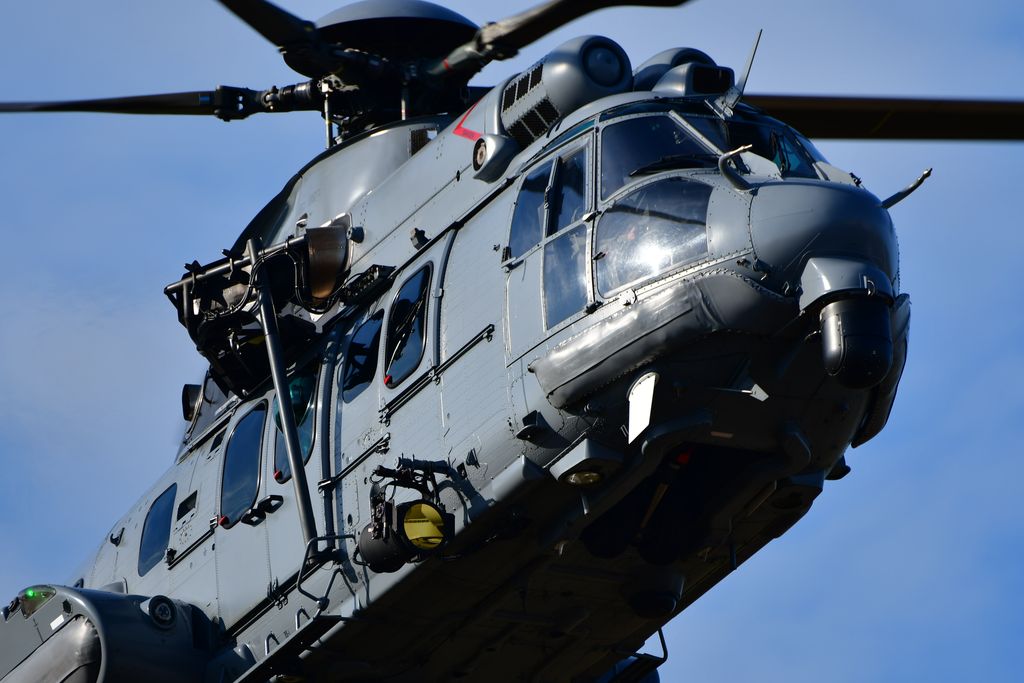
SHAH ALAM: Unmanned Wing Man. Even as we struggle to find the proper funding for RMAF Cap 55 plan and her sister services recapitalisation projects, the world continue to move ahead. At the Avalon Show 2019 in Melbourne, Australia, Boeing unveiled a full size mock up of the Air Power Teaming System (ATS)
The ATS – a fighter like unmanned aircraft will operate together with manned combat and intelligence platforms as the wingman.

From Boeing
Designed for global defense customers by Boeing Australia, it is the company’s largest investment in a new unmanned aircraft program outside the United States.
The aircraft will complement and extend airborne missions through smart teaming with existing military aircraft.
A model of the Boeing Airpower Teaming System was unveiled at the Australian International Airshow by the Australian Minister for Defence, the Hon. Christopher Pyne MP. As a research and development activity, the Australian Government and Boeing will produce a concept demonstrator called the Loyal Wingman – Advanced Development Program that will provide key learnings toward the production of the Boeing Airpower Teaming System.
“The Boeing Airpower Teaming System will provide a disruptive advantage for allied forces’ manned/unmanned missions,” said Kristin Robertson, vice president and general manager of Boeing Autonomous Systems. “With its ability to reconfigure quickly and perform different types of missions in tandem with other aircraft, our newest addition to Boeing’s portfolio will truly be a force multiplier as it protects and projects air power.”
The Boeing Airpower Teaming System will:
— Provide fighter-like performance, measuring 38 feet long (11.7 metres) and able to fly more than 2,000 nautical miles
— Integrate sensor packages onboard to support intelligence, surveillance and reconnaissance missions and electronic warfare
— Use artificial intelligence to fly independently or in support of manned aircraft while maintaining safe distance between other aircraft.“This aircraft is a historic endeavor for Boeing. Not only is it developed outside the United States, it is also designed so that our global customers can integrate local content to meet their country-specific requirements,” said Marc Allen, president, Boeing International. “The Boeing Airpower Teaming System provides a transformational capability in terms of defense, and our customers – led by Australia – effectively become partners on the program with the ability to grow their own sovereign capabilities to support it, including a high-tech workforce.”
First flight is planned for 2020.

Cap 55
With the RMAF planning up to 2055, one has to wonder whether a new plan is required soon as it is looking likely that the assumptions for it will soon be superseded. Perhaps a shorter planning cycle is needed – based on a 15 year cycle – which among others will give more urgency to those providing the funding.
— Malaysian Defence
If you like this post, buy me an espresso. Paypal Payment




Kinda look like an unmaned version of A-5 Vigilante attack bomber (https://en.wikipedia.org/wiki/North_American_A-5_Vigilante)
Well if you plan for 2055 you can still live in your own dreamland, but if you are forced to lay out a plan for the next 15 years, hard choices and decisions need to be done. Can they really have a strong spine and make hard decisions?
Well back to the unmanned wingman. All the hooha on this vaporware needs some really grounded thinking.
1. How can this thing be a useful asset for defensive posture? It would be great for offensive attacks and such. But is it an asset for air policing, air defence and such?
2. There should be no AI that can decide what targets to be attacked etc etc. All these decisions need a man in the loop, and that means a 2 way datalink. All datalinks can and will be jammed in wartime. Will these be useful in high density jamming or it will just be a flying target instead?
3. What is the cost of removing a decision maker (aka pilot) in the aircraft? More engineers? Less independence of maintaining the platform from other than its maker? Much more faster to become obsolete?
4. What kind of modifications needed to the current fighters for them to have an unmanned wingman? Can it be paired with the MKM for example?
Planning cycle is not the real issue with Cap 55 or 15 to 5 or whatever. The real issue is that these “plans” are no more than glorified wish lists.
As such the timeline of the plan is allowed to stretch for as many decades is necessary to get X total funds given the assumed budget imputed in the plan.
@…
As implied in the name, it can potentially do the job of wingman so a 2-ship flight could be run by 1 pilot only. It could also serve as a sensor or weapons platform. Laser datalink and an AI which remembers its orders could help mitigate jamming concerns.
@ chua
In the context of our air force, it is foolish to think that it could save any money by just eliminating 1 pilot, when probably more engineers and technicians is needed to make that thing work, not to mention huge amounts of bandwidth needed.
and i dont see it as a game changer if used for defensive instead of offensive purposes.
“As such the timeline of the plan is allowed to stretch for as many decades is necessary to get X total funds given the assumed budget imputed in the plan. ”
Correct. CAP55 is an articulation of the required budget more than anything else. It details broad classes of assets (MRCA, LCA etc) and not the specific assets themselves. In principle, IF an unmanned platform can fill a manned aircraft’s shoes and IF it is affordable to us, that can be acquired instead. CAP55 is an articulation of the required budget.
In practice, it is likely that the 2 MRCA and 3 LIFT squadrons in CAP55 are the minimum essential force as far as manned fighter+strike+CAS+trainer numbers are concerned. Unmanned platforms are increasingly capable (I must say this because someone accused me of dimsmissing them entirely) but are and will remain for a long time unable to supplant manned types in many roles. This is for various reasons- inherent limitations of AI, access to technology, our ability to integrate them with other ground and air units, overall force size and so on- that may not apply equally to us and other airforces.
For example, a larger air force can field a larger proportion of unmanned types because they would still have a good number of manned types available. But seeing we field just about 4 (understrength?) squadrons, doing that would involve running an unacceptably low number of manned types.
There also seems to be an unspoken assumption among some here that a hypothetical unmanned type will perform all roles equally well. That is unlikely to be the case. You might have to field multiple types, which might cost more than a single manned type and which we can’t afford.
@… “In the context of our air force,”
we can’t even afford manned solutions, so we can safely forget all this.
Let me do a simple calculation about CAP 55. Is it possible to achieve or not?
In 2055 all the birds today have gone. Even the MKMs are 40 years old and considered have gone.
All the hercs ,CNs , Nuris are gone.
So, in 35 years from now TUDM must buy 2 sq of MRCA, 2sq of FLIT, 3sq of tactical airlifter and 2 helo SAR/CSAR.
The million dollar question is where is the money for all of that in just 35 years?
Ok…lets say the money is there. Making A full sq need 5-7 years. So, TUDM must start buying consistantly every 5 years start from 2020. Even if money is provide CAP55 is a high risk plan.
When we talk about unmanned AI fighters, when we remove the human equation, the potential developments became endless.
Military planners no longer need to worry about endangering pilot lives (bad PR, cost & time invested into the pilots), and hence able to take riskier mission (deeper penetrations).
Human fatigue faults (hence human error), can be drastically reduced and for those who have the resources, able to put up a 24hr round the clock perpetually vigilant air cover. AI would able to make better decisions based on big data crunching as compared to the gut feelings of manned pilots & mission officers.
Without a frail human onboard, fighter developers can design for much higher performance envelope that a human body would not able to cope. Say, a hypersonic fighter that can enter into our country at max speed and be out of our airspace before its payload touches ground?
Well, at least these are something within the capabilities of countries that able to develop such autonomous techs (US, EU, Japan, China). For us, lets just focus on getting 5th gen fighters for our MRCA.
@ romeo
I have put the some thoughts of the plan on what you are asking for. IMO it is possible and can be done and i have posted it here before and you have read it and commented on it. So it seems that you dont understand it?
https://www.malaysiandefence.com/another-view-on-tudm-cap-55/#comment-351477
@ joe
If you want to do something like what you say, just use a long range missile. No need to reinvent the wheel.
Sg mindef will buy 4 + 8 f35 for initial batch. Looking like f35a at the final price tag wit addons. Sg just realese info picture of new 6 friget call multi role combat vessel to replacing victory class. 1st ship 2 ready in 2025. It certainly look biger then formidabel..space needed to carry usv, uuv, uav, ucav and heli.
@…
Missiles cannot provide 24hr air cover support, and missiles are expensive for numerous target kills unless you have sufficient missiles to saturate a target area. Going by that logic, why not just use nukes?
@ joe
Then the UCAV gonna use what for numerous target kills?? Buluh Runcing? Expensive UCAV + expensive missiles = CHEAP??
And you think AI can can pick its own target like SkyNET of Terminator?